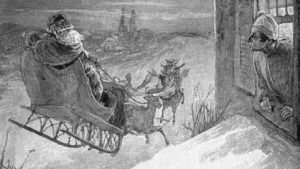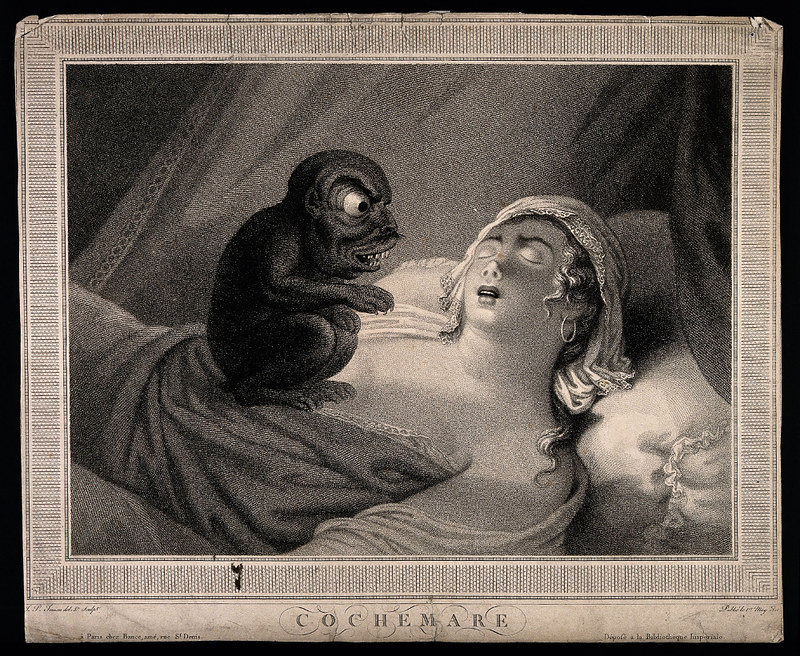In illustrations of “A Visit From St. Nicholas” by Clement Clark Moore they always show the narrator getting up out of bed with an old-fashioned sleeping hat.
The classic poem, more commonly known as “The Night Before Christmas,” frames the idea in the collective mind as to what a sleeping hat, also known as a sleeping cap, looks like.
Sleeping hats were common in Victorian times. Homes, in those days, lacked central heating. Many people saw them as a necessity to keep warm, especially in winter.
These days, in the winter, they can be found occasionally in homes in the northern half of the United States. Sleeping hats are seen primarily at night in the homes of people looking to save a few dollars on their heating oil bills.

Today, even though they’re less common, sleeping hats come in many different styles. They can look like anything. They’re just hats you wear to bed. Even a baseball cap can be pressed into service, though the hat bill interferes with sleeping on your side, the way most people like to sleep.
Besides the cold, why else you may consider a sleeping hat
There are many reasons one might want to wear a sleeping hat.
As a preteen, I hated my curly hair. I used to go to bed with a brown and gold San Diego Padres baseball cap on, which was then my favorite team. I pressed a baseball cap into service as a sleeping cap partly because of great players like Dave Winfield, Gaylord Perry, Ozzie Smith, and Rollie Fingers. The other part was me trying to smush down my curly hair. I hated it.
Trying to smash curly hair down is one of the reasons people wear a sleeping cap.
Other reasons include improved sleep (depending on the cap), stopping hair from falling out, headache prevention, and warmth.
Some caps are better than others for meeting certain needs.
If you’re looking to compress your curly hair or stop it from falling out, you won’t want a thick knit cap if it’s the summer. That would be too hot to wear. We lose a lot of heat through our heads when it’s cold because the rest of us is covered up by sheets and blankets in bed. A baseball cap is light and wouldn’t hold too much heat in.
However, if it’s winter and you want to stay warm, a baseball-style cap wouldn’t work for you. It doesn’t keep your head warm. That kind of cap has a bill in front limiting your ability to sleep on your stomach. A sleeping cap is best as a pullover for the head.
That didn’t bother me much back then as I was a side and back sleeper.
Sleeping caps and hats for cold winter nights
The most common reason why someone would wear a sleeping cap is to keep their head warm on cold nights. Blankets can cover irregularly. The cap helps make sure your head stays warm and snug.
A sleeping cap worn this way and for this reason may save hundreds on a home heating bill.
Cooling caps are a relatively new product. People report that they can help with migraine headaches and tension, but those aren’t as common to wear.
The key is to not be so cool that it’s uncomfortable.
Whether you call it a cap or hat, wearing one is a matter of preference. It can be an important sleep tool to help meet your particular needs. With other tools like lavender oil, earplugs, or other items sleeping caps can meet your objective for improved sleep.
Interesting fact: One type of sleeping hat is called a “skullcap.” There’s also an herb with the same name that can aid in sleep.
For further reading:
Sacred Living Space: how to create an environment to nourish your spirit
The handy guide to Christian bedtime prayer sleep apps
6 questions to ask before spending $$$ on an alternative healing therapy
Is this sleeping pill simply too strong?
James Cobb, RN, MSN, is an emergency department nurse and the founder of the Dream Recovery System. His goal is to provide his readers with simple, actionable ways to improve their health and maximize their quality of life.
This post includes affiliate links for which we receive a small commission if something is purchased through the link.
